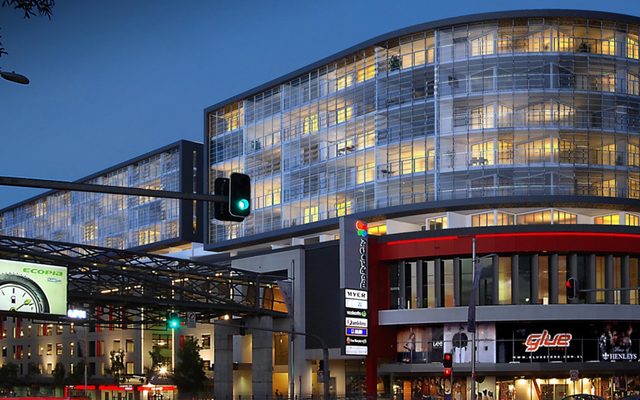This article is from the Australian Property Journal archive
MELBOURNE’S shopping strips are busier than ever, and vacancies have plunged to new lows as post-covid flexible working arrangements have created a fundamental shift in tenancy mix and developments popping up in what is becoming hyperlocal villages across the city.
According to the latest Fitzroys – Walk the Strip 2023, the market has defied headwinds with vacancies falling by 0.5% to an overall average of 6.2% in the past 12 months – 1.5% below the long-term average of 7.7%, after hitting they hit a high of 10.3% in 2021.
“Working-from-home and flexible working arrangements have created a fundamental shift in Melburnians’ relationship with their shopping strips. We are spending more money closer to home and spending more time at our local villages than ever,” said Fitzroys division director James Lockwood.
“This hyperlocality has evidently offset some of the impact of a consumer spending slowdown, as high inflation and rising interest rates affect people’s spending habits.
“Inflation has passed its peak, and most economists are expecting only one or two further interest rate rises in this cycle from here. Spending is slowing but working from home is here to stay, which means that a great deal of spending will still be concentrated on the shopping strips,” he said.
Specialty retail – the proportion of fashion, clothing and footwear, bridal and jewellery tenants increased by 2.5% to 33.4%, or just over one-third of all shops along the shopping strips. In all, 72% of strips saw an increase in specialty retail.
On the other hand, food and beverage decreased by 3.1% to 30.3%, but remained just above its long-term average, with 78% of strips reporting a small decrease.
Church Street in the bayside suburb of Brighton continues to boast the lowest vacancy rate of just 1.1%.
The nearby suburb, Hampton Street, Hampton jumped to second spot at 1.8%, as new development is energising the strip and attracting retailers to renewed locations.
High Street, Armadale is attracting high-end boutiques, specialty food offerings and new developments, with a current vacancy rate of 2.3%.
Lockwood said landlords increasingly meeting the market has helped facilitate deals and fill spaces.
“Landlords are definitely meeting the market – they’ve been more open to transact, more willing to do a deal. It’s likely they were conditioned during the turbulence of the past few years. Landlords and tenants are definitely now more closely aligned when it comes to rents,”
He added that lease profiles have also changed over the past 12 months with long-term agreements executed.
“We’re seeing more three-to-five-year deals after many tenants sought shorter-term leases during the throes of COVID. Tenants are clearly showing more confidence going forward and signing longer-term leases.”
Other highlights include Lygon Street, Carlton, where vacancies have dipped to 6.0% after skyrocketing to 20.0% during the pandemic.
Glen Huntly Road, Elsternwick was another rising star with a vacancy of just 2.0%.
And Chapel Street, South Yarra vacancies have improved from 10.7% to 7.9% – the first time in years the strip has recorded single-digit vacancies. Puckle Street, in the centre of the Moonee Ponds development boom, increased slightly but remained at a low 3.9%.
Vacancies along inner-north mainstays Sydney Road, Brunswick, Brunswick Street, Fitzroy and Smith Street, Collingwood decrease to 4.4%, 4.6% and 4.8% respectively, and in High Street, Northcote to 3.9%.
Meanwhile the report found shopping strips have realigned with service retail – including hair, nail and beauty salons, fitness studios and gyms, and medical and allied health services – bouncing back to 27.9%, above its long-term average, with 64% of strips seeing an increase.
“We’ve seen enquiry in the health and fitness space move away from 24-hour gyms and towards wellness studios with personal training approaches, as well as yoga and Pilates offerings.”
At the same time, developers are taking note with the proportion of strips earmarked for development remaining elevated since 2020, and was at 2.2% over the past 12 months, highlighting the proportion of development along two-thirds of all of Melbourne’s strips remaining above the long-term average and driving the transformation of retail strips turning into mixed-use lifestyle precincts.
“As well as bringing new retail offerings to the strip, new developments are bringing more residents and office workers to the immediacy of the strip, boosting the immediate catchment and supporting trade throughout all hours of the day – especially when so many are working from home,” said Lockwood.
The largest and perhaps most high-profile shopping strip development is the $1.5 billion redevelopment of the Jam Factory on Chapel Street, South Yarra by Newmark Capital, Gurner and Qualitas. The project will deliver 18,500sqm of new retail space, 20,000sqm of offices, 400 apartments, and a 5-star 200-room hotel, as well as an upgrade to the existing cinema complex.
Other notable developments include Pitard Group’s Dexus-backed EVA on Glen Huntly Road, Elsternwick; Toorak Village; Vicland’s eight-storey $250 million St Germain development and Orchard Piper’s $400 million luxury apartment project on the Mercedez-Benz dealership site.





